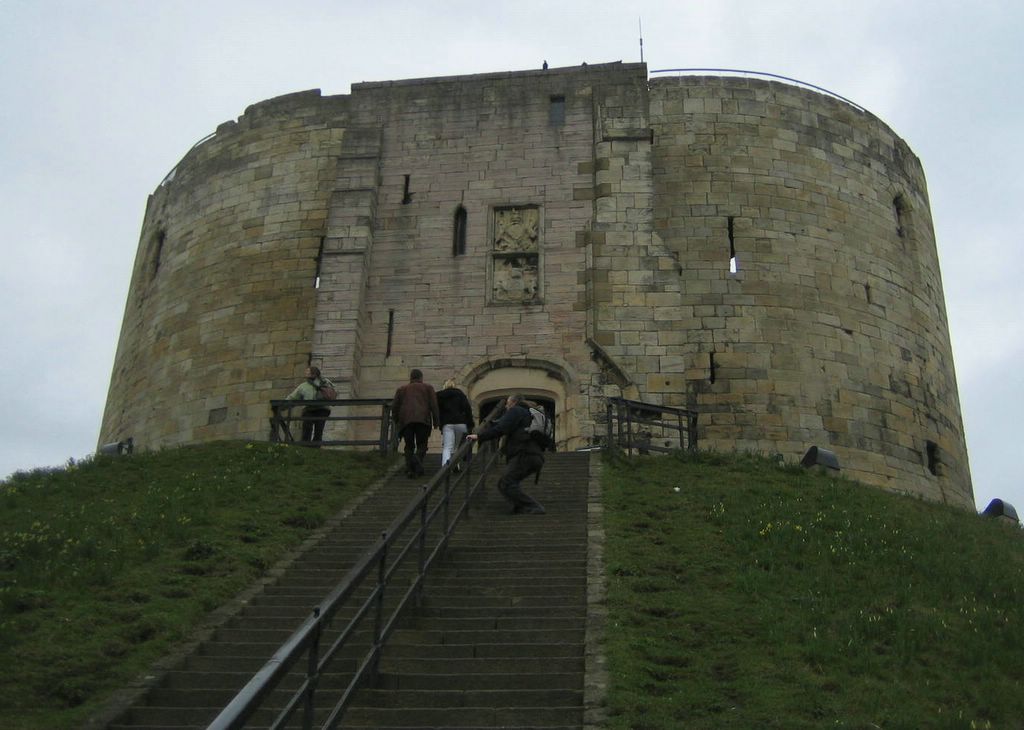Fifty-five rather steep steps lead up to the surviving tower. Since its construction by Henry III, the tower was known as the King's Tower until late in the 16th century. For some reason, people started calling it Clifford's Tower after Roger of Clifford who was chained here nearly three centuries earlier during the War of the Roses. It's ironic that one of York's best known landmarks is named after a Lancastrian.
Clifford's Tower will get its own set of pages later.

Clifford's Tower and its Fort/Castle remain today, guarding the west shore of the Foss and extending nearly to the nearby east shore of the Ouse river. However, William the Conqueror wasn't satisfied with just one fort as he built another on the west shore of the Ouse. This area (the motte-and-bailey castle is long gone) is called Old Baille and York's walls start back up here. But before we take up our walk, let's see a couple more buildings in the castle area.
Lost? If so, click here for a good map of the York Walls (in PDF format)
For more narrative on York, see our description web page by clicking here.
|
|
Send us email (it's safe to enable JavaScript on this page) |